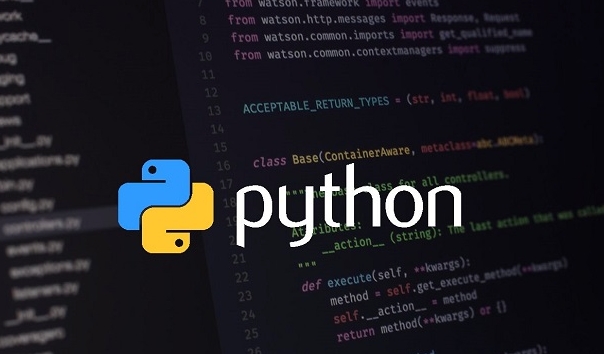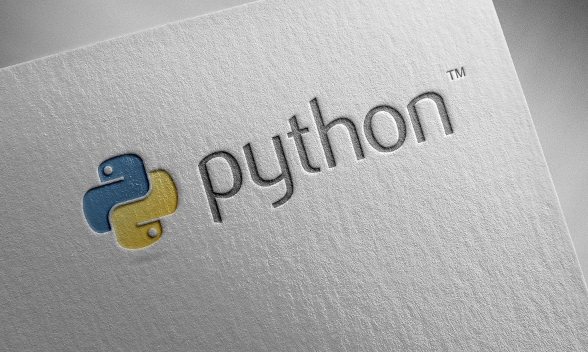Django is suitable for projects that require clear structure and full functionality, while FastAPI is more suitable for scenarios that pursue high performance and modern architectures. 1. Django is mature and stable, with built-in ORM and Admin interfaces, suitable for data-driven projects and medium- and large-scale teams; 2. FastAPI is lightweight and efficient, supports asynchronous and automatic document generation, suitable for high-concurrency tasks and microservice architectures; 3. If you already have a Django ecosystem or need back-end management, choose Django DRF; 4. If you focus on performance, development efficiency and modern syntax, it is recommended to choose FastAPI.

When developing REST APIs, Python's Django and FastAPI are both good choices. They each have their own characteristics and are suitable for different project needs. If you need a project that is fast online and has a clear structure, Django is a safe choice; while FastAPI has more advantages if you pursue high performance, asynchronous support and modern architecture design.

Django: mature and stable, complete functions
Django is a feature-rich web framework with built-in ORM, Admin interface, certification system and other modules, which are very suitable for data-driven back-end services.

- REST Framework (DRF) is the most commonly used REST API plug-in in Django. It provides functions such as serialization, view sets, permission control, etc.
- The development process is relatively fixed and suitable for team collaboration or medium-sized projects.
- ORM is very convenient to use, but supports native SQL or NoSQL are a bit stiff.
- For beginners, the learning curve is slightly steeper because you need to understand both the structure of Django and the mechanism of DRF.
For example, define a simple API interface:
from rest_framework.views import APIView
from rest_framework.response import Response
class HelloWorld(APIView):
def get(self, request):
return Response({"message": "Hello, World!"})FastAPI: Lightweight and efficient, type-first
FastAPI is an emerging framework based on the type annotation feature of Python 3.7, focusing on asynchronous support and automatic document generation.

- Automatically generate Swagger and ReDoc documents, making interface testing very convenient.
- Excellent asynchronous request processing capabilities, suitable for highly concurrency or I/O-intensive tasks.
- There is no built-in ORM, but it can flexibly integrate third-party libraries such as SQLAlchemy and Tortoise ORM.
- Easy to get started, simple code, suitable for small and medium-sized projects or microservice architectures.
A basic FastAPI example:
from fastapi import FastAPI
app = FastAPI()
@app.get("/")
def read_root():
return {"message": "Hello, World!"}How to choose? Depend on your specific needs
If your project has one of the following situations, it may be better for Django DRF:
- There is already a Django project, and the API functionality needs to be extended
- A complete ecosystem such as background management interface, user permission system, etc.
- Team familiar with Django technology stack
And if you prefer these scenarios, FastAPI may be more suitable for you:
- Hope to quickly build high-performance API services
- Need asynchronous support or construction of microservice architectures
- Like modern syntax, pay attention to interface documentation and development efficiency
Small details are easy to ignore
- In Django, remember to configure
rest_frameworktoINSTALLED_APPS, otherwise the API view will not work properly. - FastAPI does not have middleware restrictions by default. It is recommended to add
CORSsettings in the production environment, such as usingfastapi.middleware.cors.CORSMiddleware. - Both frameworks can be deployed to Nginx Gunicorn/Uvicorn, but FastAPI recommends using ASGI servers like Uvicorn to give full play to the advantages of asynchronousness.
Basically that's it. Which one to choose is not static. The key is to decide based on the project stage, performance requirements and team familiarity.
The above is the detailed content of Developing REST APIs with Python Django or FastAPI. For more information, please follow other related articles on the PHP Chinese website!

Hot AI Tools

Undress AI Tool
Undress images for free

Undresser.AI Undress
AI-powered app for creating realistic nude photos

AI Clothes Remover
Online AI tool for removing clothes from photos.

Clothoff.io
AI clothes remover

Video Face Swap
Swap faces in any video effortlessly with our completely free AI face swap tool!

Hot Article

Hot Tools

Notepad++7.3.1
Easy-to-use and free code editor

SublimeText3 Chinese version
Chinese version, very easy to use

Zend Studio 13.0.1
Powerful PHP integrated development environment

Dreamweaver CS6
Visual web development tools

SublimeText3 Mac version
God-level code editing software (SublimeText3)

Hot Topics
 How does Python's unittest or pytest framework facilitate automated testing?
Jun 19, 2025 am 01:10 AM
How does Python's unittest or pytest framework facilitate automated testing?
Jun 19, 2025 am 01:10 AM
Python's unittest and pytest are two widely used testing frameworks that simplify the writing, organizing and running of automated tests. 1. Both support automatic discovery of test cases and provide a clear test structure: unittest defines tests by inheriting the TestCase class and starting with test\_; pytest is more concise, just need a function starting with test\_. 2. They all have built-in assertion support: unittest provides assertEqual, assertTrue and other methods, while pytest uses an enhanced assert statement to automatically display the failure details. 3. All have mechanisms for handling test preparation and cleaning: un
 How does Python handle mutable default arguments in functions, and why can this be problematic?
Jun 14, 2025 am 12:27 AM
How does Python handle mutable default arguments in functions, and why can this be problematic?
Jun 14, 2025 am 12:27 AM
Python's default parameters are only initialized once when defined. If mutable objects (such as lists or dictionaries) are used as default parameters, unexpected behavior may be caused. For example, when using an empty list as the default parameter, multiple calls to the function will reuse the same list instead of generating a new list each time. Problems caused by this behavior include: 1. Unexpected sharing of data between function calls; 2. The results of subsequent calls are affected by previous calls, increasing the difficulty of debugging; 3. It causes logical errors and is difficult to detect; 4. It is easy to confuse both novice and experienced developers. To avoid problems, the best practice is to set the default value to None and create a new object inside the function, such as using my_list=None instead of my_list=[] and initially in the function
 How do list, dictionary, and set comprehensions improve code readability and conciseness in Python?
Jun 14, 2025 am 12:31 AM
How do list, dictionary, and set comprehensions improve code readability and conciseness in Python?
Jun 14, 2025 am 12:31 AM
Python's list, dictionary and collection derivation improves code readability and writing efficiency through concise syntax. They are suitable for simplifying iteration and conversion operations, such as replacing multi-line loops with single-line code to implement element transformation or filtering. 1. List comprehensions such as [x2forxinrange(10)] can directly generate square sequences; 2. Dictionary comprehensions such as {x:x2forxinrange(5)} clearly express key-value mapping; 3. Conditional filtering such as [xforxinnumbersifx%2==0] makes the filtering logic more intuitive; 4. Complex conditions can also be embedded, such as combining multi-condition filtering or ternary expressions; but excessive nesting or side-effect operations should be avoided to avoid reducing maintainability. The rational use of derivation can reduce
 How can Python be integrated with other languages or systems in a microservices architecture?
Jun 14, 2025 am 12:25 AM
How can Python be integrated with other languages or systems in a microservices architecture?
Jun 14, 2025 am 12:25 AM
Python works well with other languages ??and systems in microservice architecture, the key is how each service runs independently and communicates effectively. 1. Using standard APIs and communication protocols (such as HTTP, REST, gRPC), Python builds APIs through frameworks such as Flask and FastAPI, and uses requests or httpx to call other language services; 2. Using message brokers (such as Kafka, RabbitMQ, Redis) to realize asynchronous communication, Python services can publish messages for other language consumers to process, improving system decoupling, scalability and fault tolerance; 3. Expand or embed other language runtimes (such as Jython) through C/C to achieve implementation
 How can Python be used for data analysis and manipulation with libraries like NumPy and Pandas?
Jun 19, 2025 am 01:04 AM
How can Python be used for data analysis and manipulation with libraries like NumPy and Pandas?
Jun 19, 2025 am 01:04 AM
PythonisidealfordataanalysisduetoNumPyandPandas.1)NumPyexcelsatnumericalcomputationswithfast,multi-dimensionalarraysandvectorizedoperationslikenp.sqrt().2)PandashandlesstructureddatawithSeriesandDataFrames,supportingtaskslikeloading,cleaning,filterin
 What are dynamic programming techniques, and how do I use them in Python?
Jun 20, 2025 am 12:57 AM
What are dynamic programming techniques, and how do I use them in Python?
Jun 20, 2025 am 12:57 AM
Dynamic programming (DP) optimizes the solution process by breaking down complex problems into simpler subproblems and storing their results to avoid repeated calculations. There are two main methods: 1. Top-down (memorization): recursively decompose the problem and use cache to store intermediate results; 2. Bottom-up (table): Iteratively build solutions from the basic situation. Suitable for scenarios where maximum/minimum values, optimal solutions or overlapping subproblems are required, such as Fibonacci sequences, backpacking problems, etc. In Python, it can be implemented through decorators or arrays, and attention should be paid to identifying recursive relationships, defining the benchmark situation, and optimizing the complexity of space.
 How can you implement custom iterators in Python using __iter__ and __next__?
Jun 19, 2025 am 01:12 AM
How can you implement custom iterators in Python using __iter__ and __next__?
Jun 19, 2025 am 01:12 AM
To implement a custom iterator, you need to define the __iter__ and __next__ methods in the class. ① The __iter__ method returns the iterator object itself, usually self, to be compatible with iterative environments such as for loops; ② The __next__ method controls the value of each iteration, returns the next element in the sequence, and when there are no more items, StopIteration exception should be thrown; ③ The status must be tracked correctly and the termination conditions must be set to avoid infinite loops; ④ Complex logic such as file line filtering, and pay attention to resource cleaning and memory management; ⑤ For simple logic, you can consider using the generator function yield instead, but you need to choose a suitable method based on the specific scenario.
 What are the emerging trends or future directions in the Python programming language and its ecosystem?
Jun 19, 2025 am 01:09 AM
What are the emerging trends or future directions in the Python programming language and its ecosystem?
Jun 19, 2025 am 01:09 AM
Future trends in Python include performance optimization, stronger type prompts, the rise of alternative runtimes, and the continued growth of the AI/ML field. First, CPython continues to optimize, improving performance through faster startup time, function call optimization and proposed integer operations; second, type prompts are deeply integrated into languages ??and toolchains to enhance code security and development experience; third, alternative runtimes such as PyScript and Nuitka provide new functions and performance advantages; finally, the fields of AI and data science continue to expand, and emerging libraries promote more efficient development and integration. These trends indicate that Python is constantly adapting to technological changes and maintaining its leading position.






